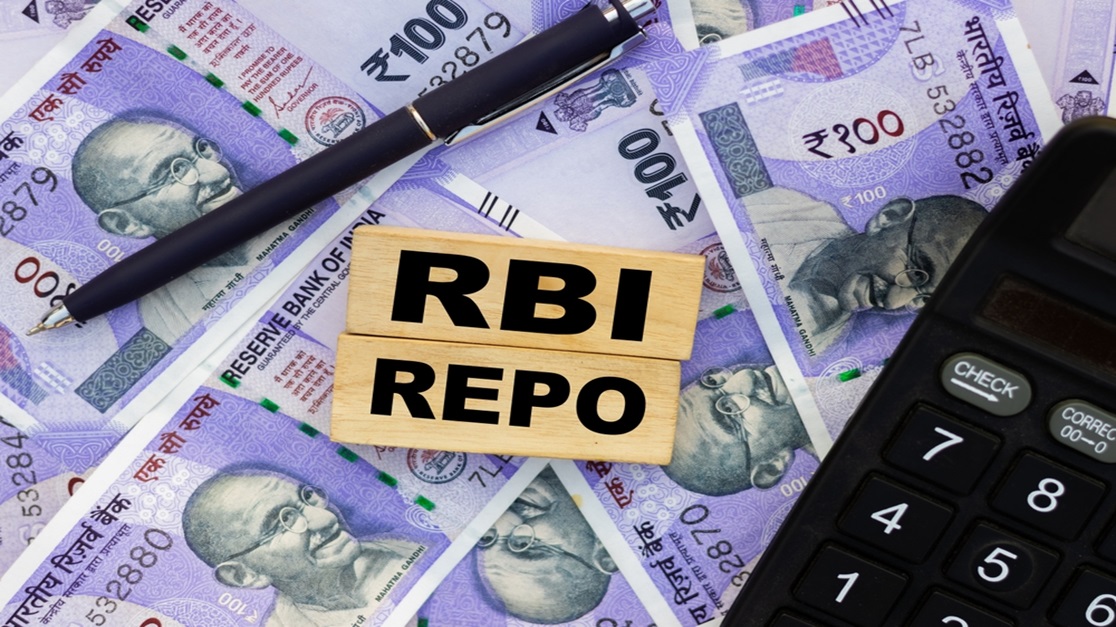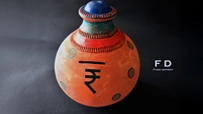RBI Repo Rate Reforms: Does it Affect Your Fixed Deposit Interest Rate?
Disclaimer: This blog is for generic information. Ujjivan SFB does not offer any personal finance products or services.
September 16, 2025

On 6 June 2025, the Reserve Bank of India (RBI) cut the repo rate by 50 basis points bringing it down to 5.50%. This marks the third repo rate cut this year, under the supervision of the new RBI Governor Sanjay Malhotra. The rate comes at a time as the Indian economy grapples with a host of challenges, including a 26% tariff imposed by the US Government on Indian exports.
Understanding the Repo Rate
The repo rate is the interest rate at which the RBI lends money to commercial banks. A reduction in this rate lowers the cost of borrowing for banks, which can lead to decreased interest rates on loans and deposits for consumers.
What Does the Repo Rate Cut Mean for your Fixed Deposit?
First things first. If you have booked your Fixed Deposit (FD) before the repo rate cut, your interest rate would remain unchanged, even if the bank decides to reduce the rate after rate cut. FD interest rates remain locked throughout the deposit tenure. So, the interest rate promised to you at the time of opening the account would remain as is – no change whatsoever.
That said, the recent reduction in the repo rate may have a significant impact on both borrowers and savers. Those with loans, such as home, auto, and personal loans, are likely to benefit from reduced EMIs. On the other hand, savers, especially those who rely on fixed deposits (FDs), may see a decline in their returns as banks lower interest rates on deposits. However, the reduction in FD rates post repo rate cut is at the sole discretion of the bank. Check with your bank to know the latest FD rates.
Here’s a summary:
- Reduction in FD Interest Rates: Banks are likely to lower FD interest rates to align with the decreased cost of borrowing. This means new FDs may offer lower returns compared to previous rates. But this depends entirely on the bank's policies and decision. Check with your bank to know the latest interest rates.
- Impact on Existing FDs: If you have an existing FD with a fixed interest rate, your returns will remain unaffected until maturity. However, upon renewal, the new interest rates will apply, which may be lower.
- Senior Citizens: Senior citizens, who often rely on FDs for regular income, may experience a decrease in interest income due to the anticipated reduction in FD rates.
Strategies to Mitigate the Impact
To navigate the changing interest rate environment, consider the following strategies:
- Lock in Current Rates: If you're planning to invest in an FD, doing so promptly can help you secure the existing higher rates before banks implement reductions.
- Diversify Investments: Explore alternative investment options such as debt mutual funds, bonds, or other fixed-income instruments that may offer better returns. However, assess the associated risks and consult with a financial advisor before making decisions.
- Laddering Strategy: Invest in multiple FDs with varying maturities. This approach provides liquidity at different intervals and reduces the risk of reinvesting all funds at potentially lower interest rates in the future.
Final Thoughts
While the RBI's repo rate cut aims to boost economic activity by making borrowing cheaper, it also signals a potential decrease in interest income from fixed deposits. Investors should stay informed about interest rate trends and consider diversifying their investment portfolios to optimize returns.
Looking to grow your savings faster? Ujjivan SFB offers a wide range of fixed deposit products. Select the FD of your choice and take a step forward to your financial goals. Alternatively, you can browse through Ujjivan SFB product suite - our wide range of financial products are designed to make your financial life better.
Disclaimer:
The contents herein are only for informational purposes and generic in nature. The content does not amount to an offer, invitation or solicitation of any kind to buy or sell, and are not intended to create any legal rights or obligations. This information is subject to updation, completion, amendment and verification without notice. The contents herein are also subject to other product-specific terms and conditions, as well as any applicable third-party terms and conditions, for which Ujjivan Small Finance Bank assumes no responsibility or liability.
Nothing contained herein is intended to constitute financial, investment, legal, tax, or any other professional advice or opinion. Please obtain professional advice before making investment or any other decisions. Any investment decisions that may be made by the you shall be at your own sole discretion, independent analysis and evaluation of the risks involved. The use of any information set out in this document is entirely at the user’s own risk. Ujjivan Small Finance Bank Limited makes no representation or warranty, express or implied, as to the accuracy and completeness for any information herein. The Bank disclaims any and all liability for any loss or damage (direct, indirect, consequential, or otherwise) incurred by you due to use of or due to investment, product application decisions made by you on the basis of the contents herein. While the information is prepared in good faith from sources deemed reliable (including public sources), the Bank disclaims any liability with respect to accuracy of information or any error or omission or any loss or damage incurred by anyone in reliance on the contents herein, in any manner whatsoever.
To know more about Ujjivan Small Finance Bank Products Visit:"https://www.ujjivansfb.in"
All intellectual property rights, including copyrights, trademarks, and other proprietary rights, pertaining to the content and materials displayed herein, belong
to Ujjivan Small Finance Bank Limited or its licensors. Unauthorised use or misuse of any intellectual property, or other content displayed herein is strictly prohibited and the same is not intended for distribution to, or use by, any person in any jurisdiction where such distribution or use would (by reason of that person’s nationality, residence or otherwise) be contrary to law or registration or would subject Ujjivan Small Finance Bank Limited or its affiliates to any licensing or registration requirements.
FAQs
1. What is the current repo rate after the recent cut?
As of June 9, 2025, the repo rate is 5.50%.
2. How soon will banks adjust their FD interest rates following the repo rate cut?
Banks may adjust their FD rates within a few weeks after the RBI's announcement, but the exact timing can vary.
3. Will existing fixed deposits be affected by the rate cut?
No, existing FDs with fixed interest rates will remain unaffected until maturity.
4. Are there alternative investments to consider amid falling FD rates?
Yes, options include debt mutual funds, government bonds, and corporate bonds. Each comes with its own risk profile.
5. What is a laddering strategy in FD investments?
Laddering involves investing in multiple FDs with different maturities to manage interest rate risk and maintain liquidity.
6. How does the repo rate cut affect loan interest rates?
A lower repo rate can lead to reduced loan interest rates, making borrowing cheaper for consumers.
7. Why does the RBI cut the repo rate?
The RBI cuts the repo rate to stimulate economic growth by encouraging borrowing and investment.
8. Can FD interest rates increase in the future?
Yes, FD rates can rise if the RBI increases the repo rate in response to economic conditions.
9. Is it a good time to invest in long-term FDs?
Investing in long-term FDs now can lock in current rates, but consider the possibility of future rate changes.
10. How can senior citizens manage reduced FD interest income?
Senior citizens might explore senior-specific savings schemes or diversify into other low-risk investments to maintain income levels
Latest Blogs

Dussehra 2025: How to Win Your Financial Battles with Smart Saving
Dussehra 2025 (also known as Vijayadashami) falls on Thursday, October 2, 2025.

eSIM Scam in India: I4C Warns Mobile Users About Rising Fraud – How to Stay Safe
The Indian Cybercrime Coordination Centre (I4C), a wing of the Ministry of Home Affairs, issued a strong warning to mobile users about the rapid increase in eSIM fraud in India.

How to Link PAN with Aadhaar: Step-by-Step Guide & Consequences of Not Linking
Linking your Permanent Account Number (PAN) with your Aadhaar is no longer just a best practice.

Annual Information Statement (AIS): A Complete Guide for Stress-Free ITR Filing
India’s tax season is in its final stretch.

ITR-1 (Sahaj) Restrictions: Income Sources Not Allowed & Filing Rules
With just a few days left before the 15 September 2025 deadline for filing Income Tax Returns (ITRs) for Assessment Year (AY) 2025-26, many taxpayers are rushing to submit their forms online.





